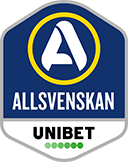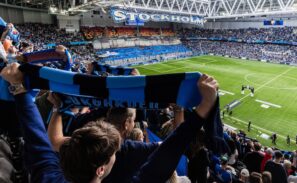At its inception, Allsvenskan was largely run by amateurs, with players working alongside football and clubs operating on small budgets. However, over the following decades, Allsvenskan underwent significant development, transforming from an amateur league into one of Sweden’s most professional sports leagues.
During the first decades of Allsvenskan’s existence, every football player in Sweden was strictly an amateur. It simply wasn’t allowed to receive payment for playing—football was something people engaged in during their free time, alongside their jobs, for enjoyment and health. This amateur ideal reflected the dominant sports philosophy of the time, where sport was seen as a morally enriching pastime rather than a career. Training sessions were often sporadic and held in the evenings after work. Despite this, the level of commitment was high, and the game was taken seriously right from the start.
However, after World War II, Swedish football slowly began to change. Following the international success of the Swedish national team, interest in Swedish football surged. With the large crowds and attention the sport garnered in the 1950s, the demands on clubs began to grow. Football became more than just a hobby for those involved, and club managements started to think about how to retain their best players while attracting talent from other parts of the country. Some clubs began offering players under-the-table payments or other types of benefits—everything from housing to bicycles and gift certificates. Even though this was against official rules, it became an increasingly common practice. Gradually, a slow shift towards a more professional approach to the sport began.

From Small Steps to a Commercial Boom
It was during the 1960s and 1970s that Swedish football began to take bigger steps toward professionalism. With a growing economy and larger sponsors willing to invest in clubs, football players in Sweden started to see the possibility of making a living from the sport.
Allsvenskan also began to attract international players, which further fueled the need for professionalism. To compete with foreign leagues for top talent, Swedish clubs needed to offer attractive salaries and better conditions. During this period, the number of full-time coaches and administrative staff also increased, helping to improve club organization.
Although much had changed earlier, it was in the 1990s that the professionalization of Allsvenskan truly took hold. As media coverage grew and television deals became larger and more lucrative, clubs began to invest heavily in their player squads and facilities. Player salaries rose significantly, and football players became public figures with great commercial opportunities. Clubs like Malmö FF and IFK Göteborg began to dominate the league, partly due to their ability to attract and retain top players through competitive salaries and resources.

Today’s Professional League
Today, Allsvenskan is a fully professional league where players have football as their primary occupation. Clubs are run like modern businesses, with professional management, extensive scouting networks, and advanced training and rehabilitation facilities. Sponsorship money and TV revenues are crucial, and clubs strive to develop and sell talents to invest in future sporting success.
Despite these challenges, Allsvenskan has managed to retain much of its character and significance in Swedish football culture. It is a league where tradition and modernity meet, and where the passion for the game remains at the heart of it all, a hundred years after its founding.
















